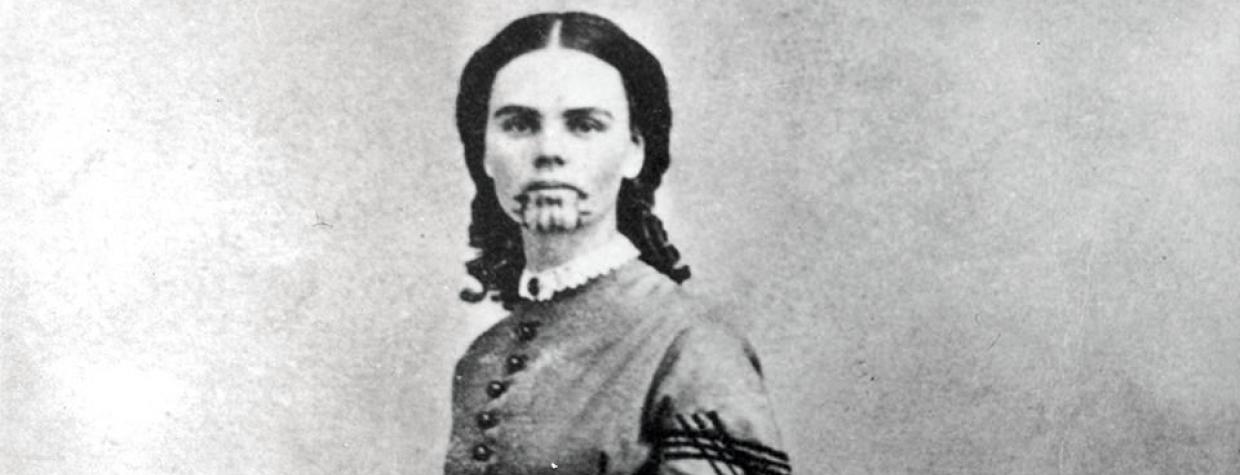If a picture's worth a thousand words, this photograph of Olive Oatman speaks volumes. Her story is remarkable.
In 1850, she and her family left their home in Illinois and headed west to California. In February 1851, they approached the Gila River in Arizona, where they were ambushed by a band of Yavapai Indians. Only three of the nine family members survived the attack — brother Lorenzo was beaten and left for dead, although he managed to seek help, and sisters Olive and Mary Ann were abducted and forced into slavery.
According to a story written by Father Edward J. Pettid in the November 1968 issue of Arizona Highways, the girls were traded to a band of Mojave Indians for "two horses, a few vegetables, a few pounds of beads and three blankets." Although the girls were captives, the Mojave chief treated them like daughters and marked them as such with blue tattoos on their chins. The Mojaves considered the tattoo — with its five vertical lines — a form of identification in the afterlife. Despite being cared for, the sisters endured severe hardships alongside the Mojaves, including food shortages. Mary Ann later died of starvation.
Five years after the family was ambushed, authorities from Fort Yuma, California, found Olive and negotiated a trade with her captors. When she finally arrived at the fort, she became an instant celebrity. Following the publication of a book about her story, Olive began talking publicly about her experiences to help promote it.
Although Olive's early years were rather extraordinary, she went on to live a very ordinary life when she married John B. Fairchild, and later adopted a daughter. Olive Ann Oatman Fairchild died on March 20, 1903, at the age of 65. The town of Oatman, Arizona, is named in her honor.

